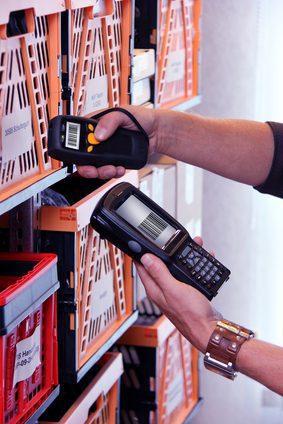What is an Asset Tag? What is It Used for?


Asset tags are an integral part of effective asset management for companies of all sizes. By attaching asset tags, organizations can easily catalog their valuable items, streamline maintenance and repair workflows, and prevent loss or theft.
Understanding the different types of asset tags and their key benefits is crucial for any organization seeking to gain greater visibility and control over its critical resources. This article will provide an in-depth overview of asset tags, explaining what they are, how they work, and why they are an essential component of modern enterprise asset management.
Asset tags are identification tags attached to assets. These small, durable labels contain unique identifiers that allow businesses to track and monitor their physical assets, from computers and equipment to furniture and vehicles.
Asset Tags are attached to both movable and fixed assets for useful life identification, inventory control, “work-in-process” (WIP) and Computerized Maintenance Management Systems (CMMS tagging).
Assets are defined as physical property, and fall into two primary categories:

Asset tagging is the process of affixing unique identification labels or tags to an organization’s physical assets, such as equipment, machinery, vehicles, IT assets, and other valuable items. These asset tags typically contain a barcode, QR code, RFID tag, or serial number that serves as a unique identifier linked to that specific asset in an asset tracking system.
The primary purpose of asset tagging is to enable organizations to track and manage their assets effectively throughout their entire lifecycle. By assigning a unique ID to each asset, companies can:
Asset tagging is a crucial component of modern enterprise asset management strategies, providing organizations with greater visibility, control, and accountability over their critical physical resources. The tags themselves can be customized with additional information such as asset descriptions, purchase dates, and condition status, further enhancing the asset tracking capabilities.

Asset tags offer a multitude of benefits to businesses and organizations spanning every industry. Asset tags are the foundational component of effective asset tracking systems, enabling organizations to accurately record and monitor moveable assets as they move throughout an organization.
Fixed asset tags are useful for automating documentation and collecting valuable data regarding asset utilization, automating routine maintenance, and tracking repairs.
For moveable assets, asset ID tags are a valuable tool in loss prevention. Assets shared among departments or those that frequently flow throughout an organization are often easily lost and, sometimes, stolen.
The use of asset tags with built-in security features, such as tamper-evident asset tags, enable organizations to keep tighter control over assets that are rarely ever in the same location and provide a deterrent to theft of high-value assets.
| Asset Tag Benefits | Description |
|---|---|
| Automate Documentation | Asset tags enable automated collection of data regarding asset utilization, maintenance schedules, and repairs. |
| Loss Prevention | For movable assets, asset ID tags help prevent loss and theft, especially for assets shared across departments or locations. |
| Streamline Maintenance | Asset tags allow organizations to streamline maintenance and repair workflows by tracking asset histories. |
| Inventory Control | Asset tags facilitate easy cataloging and tracking of an organization’s valuable physical assets. |
| Regulatory Compliance | In certain industries, asset tagging may be required to meet regulations around asset identification and tracking. |
| Security Features | Tamper-evident asset tags provide deterrence against theft of high-value assets that frequently change locations. |
Asset tags and asset tag labels enable organizations in a variety of industries to track and monitor valuable assets. Below are a few of the industries in which asset tags are commonly used as part of a larger asset management initiative.

There are a multitude of types of asset tags, many designed for use in specific applications requiring superior durability or other features, such as tamper evidence to deter theft or unauthorized transfer. Asset tags include industry-specific asset tags, such as
Other examples of types of asset tags include:
These examples represent just a few of the many types of asset tags available to meet a variety of application-specific requirements. The variety of specially designed asset tracking tags available enables businesses to design a customized and comprehensive asset tag solution meeting application-specific requirements throughout the entire organization.
The primary purpose of an asset tag is to uniquely identify and track physical assets throughout their lifecycle within an organization. Asset tags allow companies to:
An asset label, also called an asset tag, is a physical label or sticker affixed to a company’s fixed assets like equipment, machinery, vehicles, IT assets etc. An asset label contains a unique identifier such as a barcode, QR code, RFID tag or serial number linked to that specific asset in an asset tracking system
While a serial number is a unique code assigned by the manufacturer, an asset tag is a separate identifier created by the company to track the asset internally. Serial numbers may not be unique across manufacturers, whereas asset tags are customized and guaranteed to be unique within an organization’s asset pool.
There are no universal standards for asset tagging, as companies can create their own tagging system based on needs. However, four key best practices include:
You can start by using our free asset tag generator
Using this online tool, you can create and generate a fully customized concept design for an asset tracking label, warning label, CMMS label, identification label, or any other label your project may require.
Our sales engineers are experts in automatic asset tracking, tagging and identification,a nd can answer all your questions. Get in touch now.
Lets Talk ›Enter your information and get a free checklist of the top questions to answer and tips to plan a successful asset tagging project for any asset management or tracking system implementation.